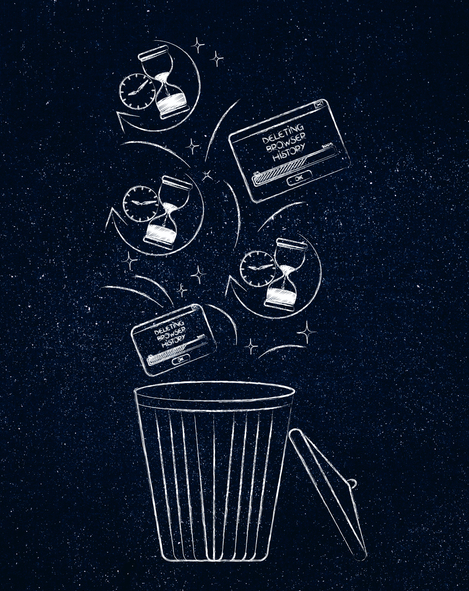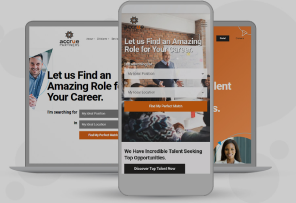Anyone who has built and launched a website has likely encountered an oft-repeated acronym: SEO (search engine optimization). And while you might not have ever done SEO yourself, you've benefited from it in the past: Every day, search engines like Google employ complex algorithms to sift through more than 400 billion web pages and deliver the most relevant results.
Website owners like you use SEO techniques and strategies to get their websites to the top of the search results for relevant user queries. But SEO is not a one-time endeavor — Google and other search engines change often, and ongoing SEO ensures your website stays in front of the people you want to reach. Just as a physical storefront requires regular maintenance and updates to stay competitive, your website needs ongoing SEO to remain visible amidst the ever-changing digital landscape.
The ABCs of SEO: What is Ongoing SEO and Why Does It Matter?
Don't let the techy jargon intimidate you. HubSpot — considered one of the gold standards for SEO and digital marketing advice — defines SEO as simply a collection of strategies and tips that "expand a company’s visibility in organic search results'' and help "drive more visitors to the company’s website, increasing their chances for more conversions which leads to more customers and more revenue."
SEO Connects the Search Engine Algorithms With Your Website's Content
Regardless of your website's goal or industry niche, all SEO techniques have one thing in common: They look at ways to optimize your website's content, keywords, and links to help search engines rank your website higher in the search results when someone searches for something related to your keywords, content, or brand name.
According to HubSpot, SEO needs to address the key factors that all search engines use to determine the value of your website's content — and therefore how high in the search results your website or specific landing page should appear:
- The intent or meaning behind why someone is searching for a specific term or question
- The relevance between what someone searches for, and the content on your website
- The quality of your content (for instance, a website about physical exercise written by certified personal trainers is deemed by Google to be higher quality than a website where the articles are written by non-experts)
- The performance of your website, such as how long it takes a page to load and whether it works well on mobile devices
Static SEO Versus Ongoing SEO: Why It Matters to Stay Fresh and Keep Your SEO Updates Current
As users' web behavior changes and technology evolves, search engines proactively adjust their algorithms.
If you aren't conducting ongoing SEO maintenance and upgrades, a well-optimized website today can quickly become obsolete tomorrow, causing your search rankings to drop and attracting fewer organic visitors. Google itself updates its algorithms several thousand times per year, including significant "major" changes every few months that dramatically change how it crawls and ranks content. For example, Google's infamous Panda update changed how it ranked how-to lifestyle content on the Internet, causing one major content publisher to lose a whopping $6.4 million of traffic and advertising nearly overnight.
How Ongoing SEO Influences Your Website Strategy
Staying abreast of changes to SEO techniques and strategies provides important guidance to your content, marketing, and overarching website strategy. For example, it can dictate or influence:
- How much content you publish, and the content's format, length, and focus
- How you incorporate other forms of media on your website, including images, video, and audio
- How you organize content on your site, including landing page layouts and your site's navigation
- What keywords and target users your website focuses on
Embrace the Power of Ongoing SEO
Caroline Forsey, an expert in thought leadership and marketing content, looked at the survey results from more than 400 of the world's leading web analysts to predict the biggest SEO trends of 2024. According to her data, some of the top changes in SEO strategies this year include:
- A heavier emphasis on expertise, meaning the content on your website should come from experts in your related field (including bylines and author bios that demonstrate the author's credentials and experience on the topic they're writing about)
- A renewed emphasis on first-person, credible content, especially as more websites generate high volumes of low-quality AI content (Google itself has announced upcoming changes to tackle low-value articles created by AI)
- A priority on websites that are deemed trustworthy, such as e-commerce sites with well-rated customer service, or content sites that do a good job of citing trustworthy research and statistics
- Bonus points on content that is creative and original and doesn't simply rehash content found on other sites
Of course, these SEO trends will inevitably change every year, and ongoing SEO will keep you competitive no matter what Google, Bing, and other search engines do. No matter your website's industry or content strategy, ongoing SEO requires that you:
- Focus on keeping your content fresh and high quality, including new blog posts or regularly refreshing and updating old product descriptions or articles
- Conduct keyword research often, since the terms or phrases that your core audience uses will evolve over time
- Maintain your website's overarching performance, such as mobile-friendliness as mobile devices evolve, and page load speed
- Build a diverse portfolio of high-quality backlinks from authoritative websites within your niche, which may include outreach campaigns, getting others in your industry to write guest blogs, and participating in online forums or communities
- Keep on top of technical and performance metrics, such as scanning your site for broken links (and fixing the links you uncover) and using tools like Google Analytics and Google Search Console to track organic traffic, keyword rankings, click-through rates, and conversion rates
- Stay on top of algorithm changes so you can adapt your SEO strategy in real-time
Some website owners think of SEO as the first step of their promotional strategy. But it's less a first step, and more an ongoing journey to ensure you, your brand, and your content stay relevant in such a competitive atmosphere. Whether you choose to go it alone and take a DIY approach to SEO, or you choose to consult with a digital marketing and SEO agency, check in often and make sure your SEO evolves as the world around you evolves.
If you've ever received an update but didn't see any changes, it might be due to your cache. Clearing out your cache can help you receive timely updates. And, if you have a business, effective caching solutions can improve the customer experience. Here’s how caching works, how to clear your cache and how to ensure you’re seeing the latest updates.
Web Caching: What It Is and How It Works
A web cache (pronounced cash) is a hardware or application process that temporarily stores copies of files for future use. Web caching is also referred to as internet caching as it stores static content you might frequently access (copy of a webpage, video) for later use. When internet users save articles it puts a demand on the business's server which has to handle multiple requests at once. Hence, caching reduces the demand on servers to avoid site crashes and overloads.
When a file is “cached”, it’s temporarily stored so you can access it even if the site crashes as it doesn't have to go to the original server. This can improve the response time to retrieve the article as it's temporarily stored and not retrieved again every time you access it. The next time you visit the site or click on the saved link, it's the cached file that opens.
Types of cache include:
- DNS caching servers temporarily store DNS records
- CDN servers store content for later use
How Web Caches Work
Maybe you're not seeing updates on your computer. Or, you run a business and want the best caching solutions for your staff.
Here are the steps for a web cache:
- An internet user is on a website and clicks on an article or video and saves the link.
- The browser communicates with the web cache and sends it an HTTP request.
- If you save the video or article in the cache, that object is then sent to the web cache. The copy temporarily saves for later use. If it's not, then when the user is ready to reference the article or media, it has to come from the origin server.
Examples of Web Caching
Let’s say you want to save a copy of a breaking news story. The first time you click on a news site and save the story it’s stored in that particular version. Then, when you’re ready to read the article or other data (video, image), you can find it without overloading the news site’s server.
In another example, let's say you have a small business with 500 employees that need internet access. Instead of paying thousands of dollars for a bandwidth upgrade, you might explore web caching. As it works in conjunction with your router, it temporarily stores the media, images and other data your employees need. This reduces the demand on your router and in turn, improves your bandwidth reliability.
Web caching isn’t limited to content. It can include any data that your device can store like a media file, image or script. Caching is beneficial because it speeds up page load times and reduces demand on backend servers. However, a concern is how to ensure you have the most recent or freshest content.
How to Clear Web Caching
Ever miss an update? Because caching saves a copy of the media, text or images from sites you visited, it’s helpful to periodically clear out your cache. Doing so can free up space from your computer’s storage. Clearing out your cache also forces your browser to access the most recent copy of the data or media when you’re online. Another reason to clear your cache is to remove malware or malicious files you picked up while online.
Here’s how to clear your cache:
- Chrome:Go to Settings, Advanced and then Clear Browsing Data. Select the box Cached Images and Files and Clear Data.
- Chrome (mobile app): Go to Settings, Privacy and then Clear Browsing Data. Select the box Cached Images and Files and Clear Browsing Data.
- Internet Explorer: Go to Settings and Delete Browsing History or use the shortcut, Ctrl+Shift+Del. Or, select Tools and in Safety select Delete Browsing History and then Temporary Internet files and Web files and Delete.
- Firefox: Go to Options and Privacy and Security and then Clear Data in Cookies and Site Data. Then click Cached Web Content and Clear. You can also select Clear History or the shortcut, Ctrl+Shift+Del for Windows or Command+Shift+Del for Mac.
Benefits of Web Caching and Caching Servers
Using the news story example from above, let’s say you want to read your saved news article but someone updated it. In this case, the caching server will refresh the content. Caching in this manner is helpful if the information is going to change unexpectedly.
Here's how this works. Your browser compares the content that’s cached or saved with the new data that’s on the web. If there’s an update or change to it, your browser will put the updated or new file in your browser cache. Hence, caching is ideal for news and stock sites (fluctuating prices) or other sites where information needs to stay relevant. But, let’s say a server is down for the news site.
When you click on the site, caching can give you access to the data or content regardless of a power or site outage. Caching is also helpful because if you’re using a mobile device, you’ll have faster speed load times even if you’re on a media-rich site with long load times.
The Demand for Effective Web Caching Solutions
About 70% of all internet traffic comes from mobile devices. Hence, if your customers are on mobile, ensuring consistent access sitewide (videos, images, other data) can improve your brand. And, the kicker? If a business's site crashes or it has poor optimization, in one fell swoop, it can damage their reputation. To alleviate this, various web caching solutions that help save bandwidth can maximize customer experiences. And, that's where CDNs come in.
Optimize Content Delivery with CDNs to Reduce Churn/Negative
Sentiment While 72% of customers share good experiences with 6 or more friends, if their experience is bad, around 13% will tell 15 or more people. Further, Google found that about 61% of users won’t return to the site. What’s worse, around 40% of customers will shop with a competitor instead.
Content distribution networks (CDNs) in different locations can help optimize your content delivery. Because CDNs work with several servers, they can retain and deliver the most recent data (content, media).
Web Caching for Mobile and Media
If your business has a large customer base or you offer media-streaming, multiple web caching servers can help your customers stay connected. If you're a network operator, for example, deploying multiple CDNs can help you scale. As you demonstrate reliable and consistent service (with no content lags), you can increase your subscriber base and offer more services.
Create Fresh, Digital Experiences Your Customers Want
About 9 out of 10 companies are looking for ways to maximize customer experiences. Hence, even a single site crash or slow loading page can negatively impact your brand. To ensure your website is optimized and running at full capacity, contact Synchronicity.
Our team can help you deliver effective, relevant content. And, your customers can load the same content - wherever they’re located - for the best user experiences. And, if you're ready to recreate your brand or start a new brand that delivers, let Synchronicity help with your brand identity. Our fresh approach includes research, proven strategies, design principles and digital marketing. You can maximize customer experiences - and stay top of mind. Let Sync show you how!



